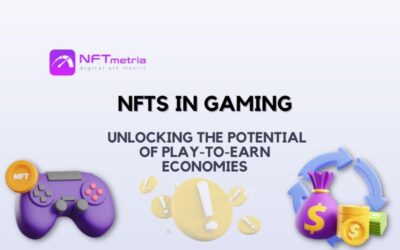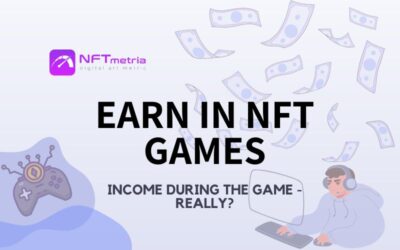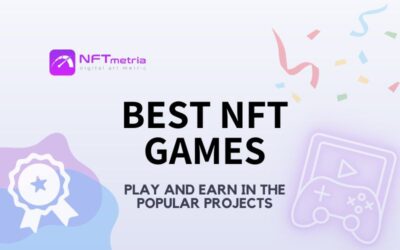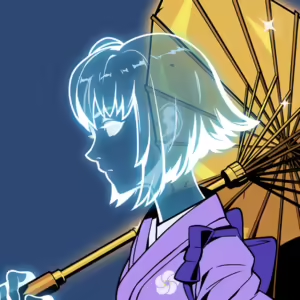The intersection of non-fungible tokens (NFTs) and the gaming industry has ignited a digital revolution, bringing about transformative changes in how we perceive and participate in video games. As we dive into the world of NFTs in gaming, we explore the concept of play-to-earn economies and their impact on gamers, developers, and the broader gaming ecosystem.
The Birth of NFTs in Gaming
The journey of NFTs in gaming began with the realization that digital assets within video games have intrinsic value. Gamers have long cherished in-game items, skins, characters, and even virtual real estate. However, these items were typically confined to the gaming ecosystem and held no tangible value outside of it.
NFTs changed this paradigm by linking ownership of in-game assets to unique blockchain tokens. These tokens are secured by the blockchain’s decentralized ledger technology, making them scarce, immutable, and tradable. This transformation allowed gamers to truly own their digital possessions and paved the way for the concept of play-to-earn.
The Play-to-Earn Revolution
Play-to-earn (P2E) is a gaming model where players can earn real-world value by engaging in gameplay and acquiring NFT-based assets. This concept turned the traditional gaming industry on its head, challenging the conventional notion of games as purely recreational activities.
P2E games introduce economic incentives, enabling players to monetize their skills and time. This model fosters a symbiotic relationship between players and developers: players gain rewards, and developers benefit from increased user engagement and a thriving in-game economy.
Examples of Play-to-Earn Success Stories
Axie Infinity
Perhaps the most iconic P2E game, Axie Infinity allows players to collect, breed, and battle fantasy creatures called Axies. Players can earn the game’s native cryptocurrency, Smooth Love Potion (SLP), by participating in battles and completing various tasks. These SLP tokens are tradeable on cryptocurrency exchanges, providing players with a real income source.
During the pandemic, Axie Infinity literally exploded the market: the daily number of active unique players was measured in tens of thousands, the internal AXS token was traded on the largest exchanges with attractive dynamics, gaming turnover was measured in millions of dollars, and many Filipinos (where the game was especially popular) because of the possibility of decent earning money, they even quit their permanent jobs in order to earn money in the game. True, the success did not last long: in 2022, there was a hack, as a result of which $620 million was stolen. Since then, the domestic economy has crashed, and the AXS token has fallen tenfold. But it cannot change the fact that Axie Infinity has revolutionized and changed the rules of the game in the entire market.
Stepn
Stepn became a game that literally captured the whole world with a similar viral meme in 2021 immediately after the fall of Axie Infinity. The mechanics of the game were physical activity (running), through which the user accumulated an internal GST token, which was converted into real fiat money. Despite the fact that an initial investment was required to purchase virtual sneakers (about 700-1000 dollars), the game had the effect of an exploding bomb, the GST token was expensive on the market, and the developers’ income amounted to millions of dollars. In 2022, the token plummeted tenfold, causing the entire economy to collapse. A separate post can be devoted to this process, so in conclusion, let’s say that thanks to Stepn, the whole world saw and tried the play-to-earn format without a deep dive into the intricacies of blockchain and cryptocurrencies.
Decentraland
Decentraland ia a virtual world (metaverse) built on blockchain, Decentraland empowers users to buy, sell, and develop parcels of virtual land. These parcels are NFTs, and users can monetize their investments by creating interactive experiences, renting their land, or selling it to the highest bidder.
The Sandbox
The Sandbox metaverse allows players to create, own, and monetize their gaming experiences. By leveraging NFTs, players can trade assets such as characters, buildings, and skins, all while participating in the game’s virtual economy.
Otherside
Otherside is potentially the most promising platform in the metaverse format, which will further implement the play-to-earn principle. The fact is that this space accumulates the best NFT collections, and the market leader Yuga Labs attracts the best infrastructure solutions as partners. It is too early to talk about guaranteed success, but the current state and development of Otherside speaks volumes about this.
Challenges and Controversies
While P2E models have gained immense popularity, they are not without challenges and controversies. Some concerns include:
- Accessibility: P2E games often require initial investments in NFTs or in-game assets, potentially excluding players with limited financial means.
- Regulatory Scrutiny: The gaming industry’s integration with blockchain and cryptocurrency has raised regulatory questions in some regions. Authorities are debating how to classify NFTs and the income they generate. For example, China previously took a tough position regarding such games and banned them on the territory of its country.
- Environmental Impact: The energy consumption associated with blockchain technology, especially proof-of-work systems, has drawn criticism for its environmental impact.
The Future of NFTs in Gaming
The convergence of NFTs and gaming is still in its nascent stages, with enormous potential for growth and innovation. The future may witness:
- Increased Integration: Expect more traditional gaming studios to embrace NFTs and blockchain technology, giving rise to mainstream P2E experiences. For example, gaming industry leader Sony has filed a patent for NFTs for own gaming ecosystem
- Cross-Platform Play: Gamers may have the opportunity to utilize their NFT-based assets across multiple games and virtual worlds, unlocking even more value.
- Enhanced Governance: Players may gain a more significant say in the development and direction of the games they participate in through decentralized autonomous organizations (DAOs).
- Market Expansion: As blockchain technology evolves and becomes more energy-efficient, NFTs in gaming could become more sustainable, potentially alleviating environmental concerns.
In conclusion, NFTs have introduced a groundbreaking dynamic to the gaming industry by enabling play-to-earn economies. These economies empower gamers to not only enjoy their favorite pastime but also earn real-world value in the process. While challenges persist, the fusion of NFTs and gaming holds the promise of a more immersive, lucrative, and decentralized future for gamers worldwide. As the metaverse continues to expand, the possibilities for NFTs in gaming appear limitless, ushering in a new era of digital entertainment.











